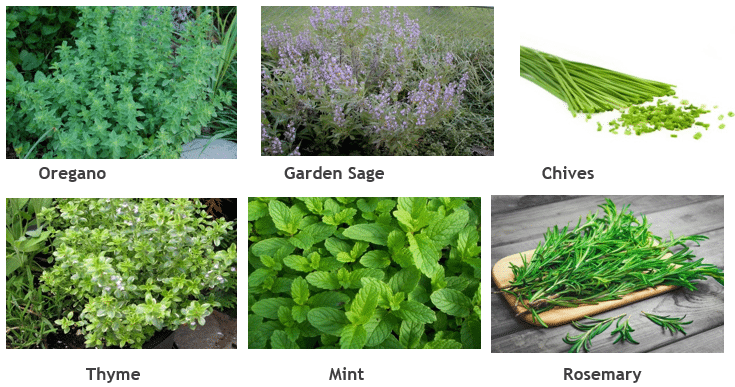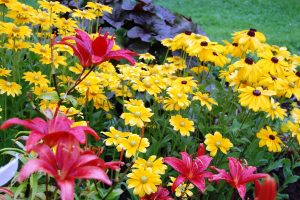
May Newsletter
May Gardening in the Greater Jacksonville Beaches area!
• What To Plant
• What To Do
• Plant Focus: Seabreeze Bamboo
Focus on Florida Friendly!
We are fortunate that there is a great variety of plants suitable for our North Florida yards, especially this time of year. But sometimes it’s easy to become overwhelmed by the number of choices we have. One way to be assured that your plantings are easy-care and appropriate is to choose plants identified by the University of Florida as Florida Friendly. You may even want to become certified as a Florida Friendly Yard by the Duval County Cooperative Extension, under the Florida Yards and Neighborhoods program. They recognize owners who use environmentally friendly practices and plants suited to their landscapes, provide habitat for wildlife, and avoid plants they have determined to be invasive. Your yard’s design can be natural and informal to conventional and manicured and still be Florida Friendly.
For help with developing any of your landscape, contact us to inquire about a landscape consultation. We can help with any size project, whether we create a complete master plan, or you simply need guidance on your next DIY project.
CLICK HERE FOR CONSULTATION FORM!
WHAT TO PLANT
Houseplants: Many plants which need indoor protection in winter will get a lift from outdoor summer-time life in North Florida. These transitional plants can be an important part of your outdoor design. Avoid direct sunlight for most, at least while they acclimate a few increasing hours each day to higher light conditions. We currently have a great selection including air plants, hoya, succulents, bromeliads, African violets, calla lilies, ferns, ZZ plants, orchids, palms, dracaena, ficus and more.
Annuals (Or Grown As Annuals): If supertunias, petunias and alyssum are planted so they receive afternoon shade or in moveable containers, then these can often be babied through the hot season until they can proliferate again in the fall. More reliable for May are angelonia, blue daze, caladium, celosia, coleus, gazania, pentas, vinca (Catharanthus), wax begonia, zinnia, helichrysum, verbena, bacopa, marigold (Tagetes), sunpatiens, melampodium, portulaca and sweet potato vine. Trailing torenia is particularly useful, with sustained flowering through the summer. It also doesn’t require, and does better without, full sun.

Perennials: Most perennial types can be planted now. Many perennials have very long bloom times, including salvia, beach sunflower, gaura, bush daisy, hibiscus, porterweed, yarrow, plumbago, firecracker grass (Russelia), firespike (Odontonema), bulbine, shrimp plant (Justicia), cigar plant (Cuphea), canna lily, gerbera daisy and lantana. Native plants like cone flower, black-eyed susan (Rudbeckia), blanket flower (Gaillardia), tickseed (Coreopsis) and milkweed (Asclepias) are good choices for a more natural landscape and to support wildlife. You can install groundcovers and border plants like blueberry flax (Dianella), African iris, holly fern, autumn fern, liriope, mondo grass, aztec grass, society garlic, foxtail fern and Asiatic jasmine. Also, many bulbs can be planted at this time, particularly crinum, caladium, canna, and agapanthus. Ornamental grasses include sea oats, fountain grass, muhly grass and pampas grass. Some of the great tropicals we grow here seasonally or with occasional protection are variegated shell ginger, mandevilla, ixora, croton, cordyline, colocasia, stromanthe, bougainvillea and bird of paradise.

Vines: Vines include passion vine, English ivy, confederate jasmine, Carolina jessamine, morning glory, blue sky vine, bower vine, butterfly vine (Mascagnia), clerodendrum, crossvine, hyacinth bean, dutchman’s pipe, coral honeysuckle, Mexican flame vine, and moonflower.
Trees and Shrubs: Its still cool enough to give trees and shrubs a good start. Fine choices are Firebush (Hamelia), azaleas, princess flower (Tibouchina), loropetalum, bush daisy, coontie, pyracantha, banana shrub, bananas, crape myrtle, pineapple guava, hollies, junipers, gardenia, Japanese blueberry, ligustrum, oleander, pittosporum, podocarpus, viburnum, duranta, buddleia, bottlebrush, Indian hawthorn, and St. Lukes plum. Don’t forget edibles such as citrus, blueberries, blackberries, raspberries, figs, culinary ginger, goji berry and turmeric. We carry blackberries and raspberries with low chilling-hour requirements to grow in our mild climate.
CLICK HERE FOR CARE GUIDES!
Lawn: Sod can be planted at almost any time of year, but better when it is actively growing early in the season. Summer heat can be stressful but there is usually more rain during this time also. If your lawn failed previously in an area, make sure the best variety is installed for that location and do a soil test. Stagger pieces of sod and fit closely together. Wait 3-4 weeks before mowing and one to two months before fertilizing. If planting plugs, space 6-12 inches on center and don’t mow for at least 2-4 weeks or until firmly rooted, and don’t fertilize until they’ve grown together. Water sod and plugs lightly but frequently for the first month. Don’t apply a pre-emergent herbicide at least 2-4 months before sodding or plugging. Bahiagrass, centipedegrass and bermudagrass can be started with seed by April. St. Augustinegrass is not an option for seeding.
Vegetables and Herbs: The best crops to plant for warm weather are okra, eggplant, peppers, beans of all types, southern peas, Malabar spinach and sweet potatoes. Although they grow well in summer, some of these crops and others such as corn and melons, need to be planted early to have enough time to produce. Summer squash and cucumbers should also already be in the ground, as should tomatoes to allow enough time before temperatures become too hot. If you plant any tomatoes now, the best would be cherry tomatoes as they seem to persist better than most. Swiss Chard can continue to be grown. See our handout Planting Guide for North Florida Vegetables, for vegetable growing information. CLICK HERE!
Good summer-time herbs to plant are lemon grass, basil, dill, Cuban oregano, chives, Mexican tarragon, garden sage, bay laurel, thyme, mint, rosemary, and oregano/marjoram. See our handout Planting Guide for North Florida Culinary Herbs for additional growing information. Also see Herbs for North Florida, for some specific variety and usage information for many of the herbs we carry. CLICK HERE!
Plant Focus
Seabreeze Bamboo
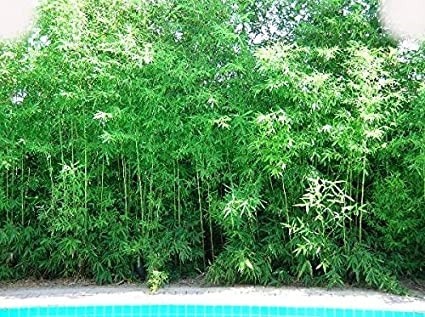
Seabreeze is an elegant bamboo with small leaves and fine texture. It is probably the best screening bamboo with its dense growth of lateral branching even at the base. Spaced 4′ to 6′ apart, individual plants will form a complete screen. Growth rate is extremely fast; a 3 gallon plant will reach about 10′ tall in the first year. To create a hedge, the height can be easily controlled with a simple pruning of the canes.
What to Do
Irrigate: May is usually a dry month so make sure your lawn and plantings aren’t showing signs of water stress. Aim for about 1″ of water weekly with no more than 1/2 to 3/4″ applied at a time, to avoid runoff. The SJRWMD allows Wednesday/Saturday irrigation for odd numbered addresses and Thursday/Sunday irrigation for even numbered addresses, outside the hours of 10 a.m. to 4 p.m. Nonresidential properties can water on Tuesdays/Fridays. Use of a micro-spray, micro-jet, drip or bubbler irrigation system is allowed any time. New plantings can be watered anytime of day for 30 days post-planting and every other day for the next 30 days. Some trees may require up to 5 months of supplemental watering to establish strong roots; after the initial 2 months, this can be supplied by hand watering. It’s a good idea to check your sprinkler system for any breaks or misaligned spray heads at least monthly.

Mow: As temperatures rise and grass growth increases, frequent mowing produces a strong lawn. Mowing will remove some flowering stalks of annual
weeds and make weeds less noticeable. Never remove more than 1/3 of the leaf blade at a time and mow to the highest recommended height to support root growth. Here are the recommended mowing heights for several N. Florida grasses: Bahiagrass at 3-4″, Zoysiagrass coarse textured varieties at 3-4″ and fine textured at 1-2″, Centipedegrass at 1½ to 2½”, Seashore Paspalum at 1½ to 2″, and St. Augustinegrass at 3″ but up to 4″ in the shade with the standard varieties.
Fill Lawn: Fill in low spots in your lawn with quality sterile sand mixed with organic matter, an inch or two at a time. As the grass grows into this, repeat with another 1-2″ layer until the low level is even with existing ground.
Prune: Continue to deadhead old blooms on annuals. Prune spring flowering shrubs and trees such as azalea, dogwood, redbud, Japanese magnolia, spiraea and loropetalum after they finish blooming, but keep in mind these shouldn’t be pruned much after May, to ensure spring blooms next year. Remove dead fronds and old flowering parts from palms. Remove fruit from newly planted trees to help establish their roots and shoots.
It’s a good idea to sterilize your pruning tools with a disinfectant, between plants. Although a chlorine solution is often recommended, bleach is corrosive to metals and pitted pruners will harbor more microbes that the disinfectant can’t reach. Bleach remaining on the pruners is also damaging to plant tissue. Use Lysol instead – it is minimally corrosive and extremely effective against pathogens.
Harvest: Continue to harvest citrus as it ripens, and any remaining cool season herbs and crops, especially if they begin to bolt. Peaches, nectarines and plums should begin ripening.
Mulch: Mulch new plants after planting. Apply a light cover around new vegetable transplants, and seedlings after they germinate. A 2-3″ layer of mulch moderates soil temperatures, retains soil moisture, reduces erosion and weeds, and adds organic matter to the soil as it decomposes. Mulch also creates an attractive unified look to highlight your plantings. Florida’s warm and often wet weather can lead to rapid breakdown of mulch, so be on the lookout for our pre-order mulch deals. We can help you determine how much mulch you need for a specific area.
Fertilize: If you haven’t already fertilized your lawn, you can do so through May. Select a fertilizer with at least one third of its nitrogen as a slow release (non-water-soluble) form. After applying granular fertilizer, you will need to irrigate long enough to move the granules off the leaf blades and into the soil; this should require only about ¼” of water.
Fruiting shrubs and trees generally need more fertilizer during the year than other shrubs and trees. Recommendations for fruit tree products and frequency depends on the type of tree. Blueberries should receive just a light application every other month from about March until October. Citrus should be fertilized 3 or 4 times during the growing season, starting in March. See our handout Citrus Care Guide for more information. CLICK HERE!
Fertilize palms about every other month during the growing season. Palms need a high potassium to nitrogen ratio plus added magnesium so an 8-2-12 fertilizer with 4% magnesium works well. Azaleas also benefit from a little extra TLC. Apply a slow release acid fertilizer in March, May, August and early October.
Herbs and vegetables will benefit from a slow/continuous release organic fertilizer applied every 3 to 4 weeks (herbs at half strength). If you’ve built your soil following the instructions for preparing a raised garden in March’s newsletter, you may not need to fertilize all season. In general, even though it’s a little costlier, try to use a slow release fertilizer or fertilizer with at least 30% as a slow release component.These feed lawns and plants more consistently and lessen pollution.
Control Weeds: As the weather heats up its better to spot control weeds and avoid applying herbicides to the entire yard. Mow regularly, removing no more than 1/3 of the leaf blade and bag the clippings to remove weed flowers before they go to seed. Fertilome Weed Free Zone is a post-emergent herbicide for broad leaf weeds useful in 45-90°F temperatures. Fertilome Selective is useful for spot treatment. To control nut-sedge and dollar weed, make sure you’re not creating favorable conditions by over-watering your lawn. Always choose an herbicide that lists your lawn type on the label and follow instructions carefully as they can vary.
Monitor and Control Insects and Disease: Continue to monitor pests and disease on houseplants, lawns and gardens. Fungal disease can occur almost any time of year, especially if the landscape is over watered or watered at the wrong time of day. Bonide Infuse Systemic Disease Control can prevent and control fungal growth.
In lawns, watch for discolored areas, which may be a sign of disease. Large Patch is a fungal disease that will hopefully play out this month as grass begins to regrow. Take-all root rot is another fungal disease of lawns, occurring in St. Augustinegrass and bermudagrass and usually showing in spring or early summer when the turf is emerging from dormancy. Turfgrass decline can be difficult to diagnose but a maintenance program with Rockaway is a first step to controlling and identifying these problems.
Thrips, scale, and mites become more active in warm weather. Check for thrips on leaves and flowers of roses and gardenias. Inspect for oleander caterpillar damage on oleanders.
Aphids feed on tender new growth. Frequently scout the vegetable garden for these insects as well as scale, caterpillars and white fly, as insects are easier to control when first noticed. Beneficial insects such as ladybug beetles and lacewing can control soft-bodied insect pests. To maximize the effectiveness of these natural enemies, provide habitat and relief from high temperatures by increasing the amount and diversity of plants in your landscape. Refer to our handout Ladybugs, for storage and release information. CLICK HERE!
Insecticidal soap and horticultural soap sprays will also control many soft-bodied insect pests, and a product such as Dipel Dust with B.t. (Bacillus thunbergiensis) is useful against caterpillars. Spinosad is particularly effective on caterpillars and thrips (also leafminers, spider mites, mosquitoes, ants and fruit flies) and lasts up to 4 weeks. Additionally, it is safe for people, beneficial insects and adult butterflies, and safe for bees once it has dried. Neem oil can be used to combat insects, mites and fungus. Many insect problems require a combination of pest management products and techniques.
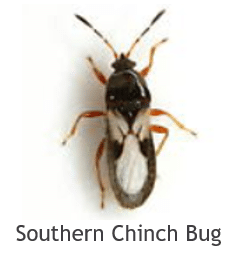
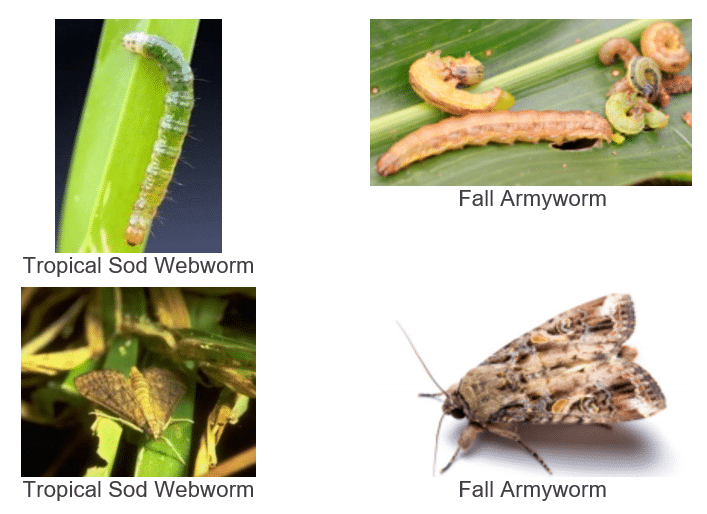
The major lawn pests active this time of year are Southern Chinch Bug, Tropical Sod Webworm and Fall Armyworm. Mole crickets can be a pest of bermudagrass, bahiagrass, and centipedegrass.
Chinch bugs suck the juices from St. Augustinegrass at or just below the soil level. Injured plants look stunted, yellowed, wilted, or dead. Yellowish to burnt-brownish patches are often first noticed along sidewalks or in poorly-irrigated areas. To help control the problem, limit nitrogen fertilizer and reduce thatch thickness to minimize the bug’s habitat.
Newly hatched larvae of tropical sod webworm skeletonize grass blades while older larvae chew on grass blades near soil surface. Small patches of grass may look ragged and irregular. The adult moth does not cause damage but the life cycle from egg to adult only requires 5-6 weeks at 78°F.
Fall armyworm caterpillars skeletonize grass blades then later create bare spots. Mole crickets cause their destruction by tunneling under the surface causing damage to grass roots. Two of the three mole cricket species are also herbivorous.
Younger caterpillars of both armyworm and webworm are more easily controlled with reduced-risk products like B.t., halofenozide and spinosad. Bifenthrin also targets both these caterpillars and Chinch bugs. You can use a product like Hi Yield Bug Blaster Plus Above/Below. Bifenthrin can also be used to control mole crickets, as can a few other insecticides and beneficial nematodes. Rotate combination products to reduce resistant populations and spot treat when possible.
In weedy areas and open fields, Lubber Grasshopper adults may be found from March to November. It may be possible to avoid the use of an insecticide by hand-picking the grasshoppers and mowing vegetation to appropriate heights.
For any problem it may occasionally be less costly and more environmentally friendly to replace infected plants with another species that would be more appropriate for the site. Don’t be reluctant to remove a plant that just isn’t working.

